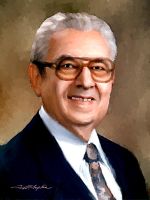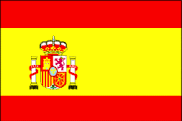
Herbert C Brown Ph.D.
The Nobel Prize in Chemistry 1979
The President's National Medel of Sciences - Physical Sciences, 1969
Nobel co-recipient Georg Wittig
Organic Chemist. Development of use of boron into important reagents in organic synthesis. School, advanced several times, graduating at 12; refused further advancement, avoiding being sister's classmate.
Graduating, Depression years, future wife Sarah gave him gift, Stock's 'Hydrides of Boron and Silicon' because cheapest chemistry book! Led to Nobel Prize!
Youth
Herbert Brown's parents were Charles Brovarnik and Pearl Gorinstein, Ukrainian Jews. In the early 2Oth century, during the Jewish migration, they immigrated to London, England where they married. Herbert's elder sister Ann was born in 1908 and he was born in 1912. In 1914 Herbert's father chose to immigrate to the USA where his parents and other relatives were living; his mother was not pleased to move for her relatives remained in England. In the USA his paternal grandfather's name had been anglicized to Brown. So Herbert's family name also became Brown. His younger sisters Sophie and Riva were born in 1916 and 1918.
Herbert's father had been trained as a cabinet maker. However, in the USA, there being no demand for delicate inlaid work, he became a carpenter. Due to the Depression of the 1920s, Herbert's father established a hardware store at 18th and State Street in Chicago. The family lived above the store. Herbert attended the Haven School at Wabash and 16th Street. It was an African American neighborhood. Upon graduating, Herbert attended Englewood High School on the South Side of Chicago.
When Herbert was about 14 years of age, his father passed away due to some sort of infection in 1926. Herbert had to leave school and work in their store. Not being interested in the store work, Herbert spent time reading. Herbert's mother decided to take care of the store and sent him back to school - Englewood in February 1929 and he graduated in 1930. Herbert operated the humor column of the school paper and was awarded a nationwide prize.
Later Herbert's family sold the hardware store. When Herbert graduated from high school, the Depression had commenced. He had not hoped to attend college. He was unable to find a permanent position. Studying, unlike odd jobs he could obtain, was very attractive. Hearing that one could earn a good living as an electrical engineer and intending to major in that field, he enrolled in college. However, he took chemistry. Chemistry fascinated him and he remained a chemist for the rest of his life.
In 1933 when Brown had completed just one semester at Crane Junior College, the school was headed to close for lack of funds. He then attended one or two courses at Lewis Institute night school. During this time he earned a living as a part-time shoe clerk.
An instructor, Dr. Nicholas Cheronis, accepted students in his laboratory, enabling them to continue their studies on their own. Herbert met a fellow student, Sarah Baylen. Until the arrival of Herbert, Sarah had been the brightest student in chemistry at Craig. Later in her writing, 'Remembering HCB', she describes initially hating his guts. Upon realizing that she could not out beat him, she decided to join him. This turned out to be everlastingly delightful to Herbert for he fell in love with Sarah.
Wright Junior College opened in 1934. Herbert was one of nine students in the first graduating class. In his year book, Sarah predicted that he would be a Nobel Laureate!
Herbert had been advised to take the competitive examination for a scholarship at the University of Chicago. He took the exam. He was surprised to discover that the exam barely had questions in chemistry, physics and mathematics which were the subjects he had studied. The questions were on general subjects which he had not formally studied: history, art, music, literature, etc. He was pleasantly surprised to be awarded a half scholarship.
In the Fall of 1935 Herbert enrolled in the University of Chicago. He had the company of Sarah. Robert Maynard Hutchins, President of the University held the opinion that students should be permitted to proceed as rapidly as possible. In that era the fee was the same for taking the usual three courses or ten courses. Hence he took more courses, completing the junior and senior years in three quarters and receiving the B.S. in 1936.
Herbert wanted to work and marry Sarah. However, Julius Stieglitz, a famous organic chemist - then Emeritus and who was teaching saw a good future for a research chemist. He convinced Herbert to change his decision. Sarah agreed that they could postpone marrying. Herbert commenced graduate work.
Later Herbert Brown and Sarah Baylen were married.
Reference nobelprize.org.
Discover Your Abilities and Aspirations!
 $10 $25 $50 $100 Other
$10 $25 $50 $100 Other
Tax Exempt 501(c)3 Non-Profit Organization
Any Currency
“…the peace that is found in libraries and laboratories…” - Louis Pasteur
Copyright © 2023 Ganga Library Inc. All Rights reserved.;

Photo Purdue University. Painting Tim Tompkins PaintHistory.com
Name: Herbert Charles Brown
Birth: 22 May 1912, London, United Kingdom
Death: 19 December 2004, Lafayette, IN, USA
Institution: Purdue University, West Lafayette, IN, USA
Award: "for their development of the use of boron- and phosphorus-containing compounds, respectively, into important reagents in organic synthesis"
Subject: Organic chemistry
Portion of cash: 1/2
Biography
Inventory of H.C. Brown papers
Books
Patents
Videos
Death
Family
Honoring H.C. Brown
Health
Livelihood
Prediction
Defining Moment
Humor/Quotations
Youth













